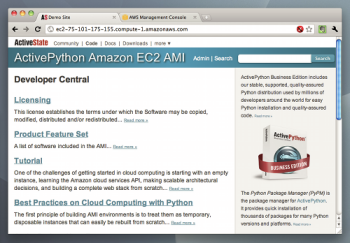Tuesday, July 30, 2013
Saturday, November 17, 2012
What to expect at AWS re:Invent 2012 cloud conference
- What do you think will be the important points at this show?
- Who do you think will benefit most from attending?
- What does it mean that AWS is hosting its first ever cloud conference?
Wednesday, July 25, 2012
Amazon AWS
Amazon Aws | Why Cloud Computing
Amazon offers different types of Instance types for their customers to meet their cloud computing needs. Each instance has different specifications and customers <http://www.whycloudcomputing.net/tag/amazon-aws/>
Tuesday, July 24, 2012
Amazon AWS Updates
Filed Under. Amazon, AWS, cloud. Comments. View the discussion thread. Join 40000+ Insiders SIGN UP FOR OUR NEWSLETTER. FierceEnterpriseCommunications is the IP Communications industry's leading source of insider information and updated <http://www.fierceenterprisecommunications.com/story/amazon-web-services-bolsters-cloud-capabilities/2012-07-23>
Amazon Web Services: When did Amazon Web Services ... - Quora
Answer 1 of 4: July 19, 2012 - Amazon now offers a new instance type, hi1 4xlarge, that includes two dedicated 1TB SSDs attached as ephemeral instance <http://www.quora.com/Amazon-Web-Services/When-did-Amazon-Web-Services-begin-offering-SSDs-in-its-public-cloud>
Saturday, May 26, 2012
Automate Cloud Application Deployments with Eucalyptus and AWS CloudFormation
Learn How to Provision and Configure the Same Application on Both AWS and Eucalyptus
Date: Thursday, May 31, 2012
Time: 2:00pm EDT / 11:00am PDT
Reserve Your Webinar Seat
Wednesday, March 9, 2011
Amazon Web Services: Students can start using
Here is a Professional Tips from Jeevan Dongre on using AWS
The Latest from Amazon Web Services Blog |
| JumpBox for the AWS Free Usage Tier Posted: 08 Mar 2011 11:16 AM PST We've teamed up with JumpBox to make it even easier and less expensive for you to host a WordPress blog, publish a web site with Drupal, run a Wiki with MediaWiki, or publish content with Joomla. You can benefit from two separate offers:
Any AWS user (free or not) can take advantage of JumpBox's offer, paying the usual rates for AWS. The AWS free usage tier is subject to the AWS Free Usage Tier Offer Terms; use of AWS in excess of free usage amounts will be charged standard AWS rates. Note: The JumpBox machine images are larger than the 10 GB of EBS storage provided in the free usage tier; you'll be charged $1.50 per month (an additional 10 GB of EBS storage per month) if you run them in the free usage tier. The applications are already installed and configured; there's nothing to set up. The application will run on an EC2 instance of its own; you have full control of the configuration and you can install themes, add-ins, and the like. Each application includes a configuration portal to allow you to configure the application and to make backups. Here's a tour, starting with the 1-page signup form: 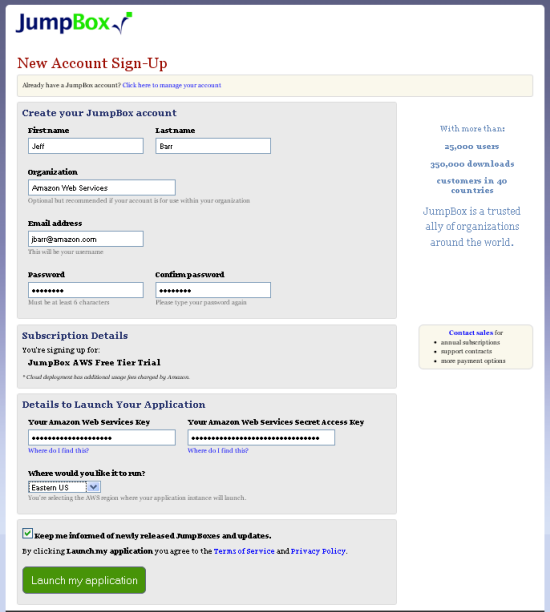 After a successful signup, JumpBox launches the application: 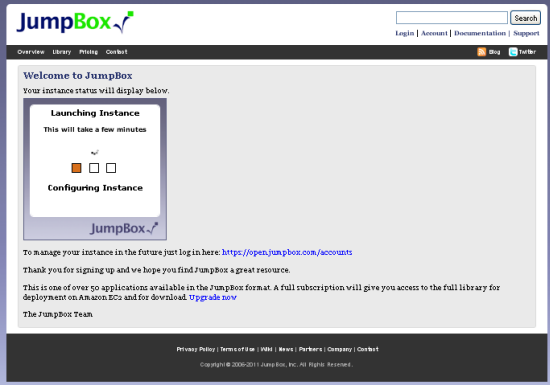 The application will be ready to run in a very short time (less than a minute for me): 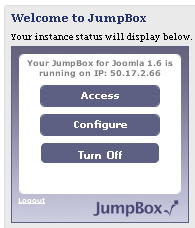 The next step is to configure the application (I choose to launch Joomla): 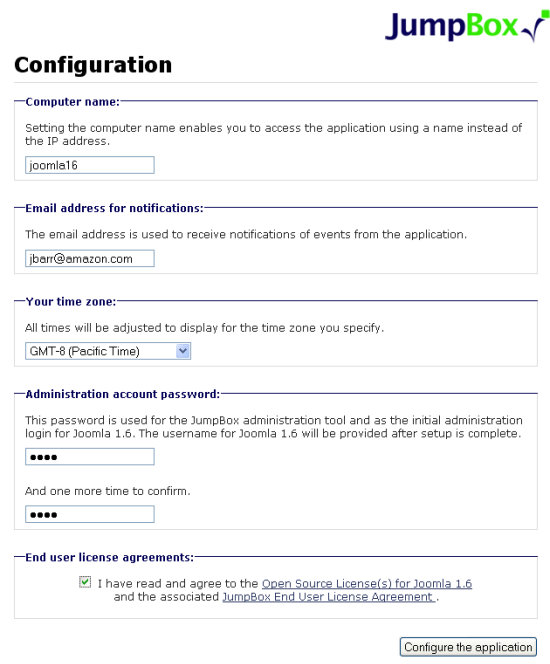 And I am up and running: 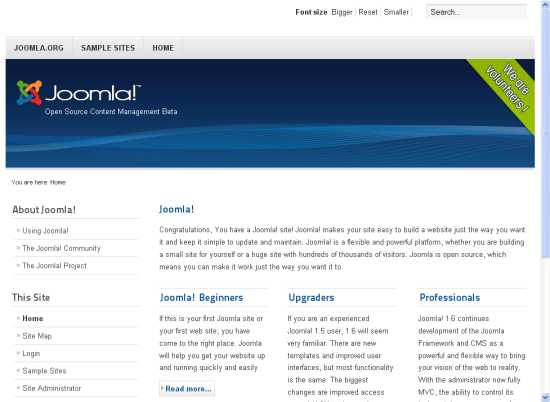 You can access all of the administrative and configuration options from a password-protected control panel that runs on the EC2 instance that's hosting the application: 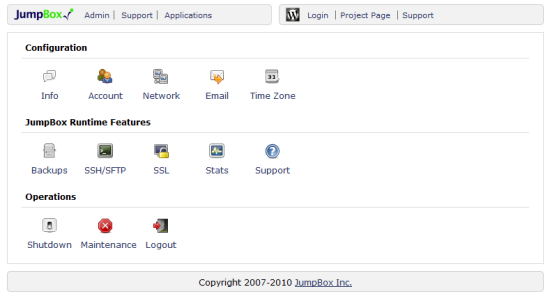 Here are the links that you need to get started: As you can probably see from the tour, you can be up and running with any of these applications in minutes. As long as you are eligible for and stay within the provisions of the AWS free usage tier, you can do this for free. I'm looking forward to hearing your thought and success stories; leave me a comment below. -- Jeff; |
| ActivePython AMI from ActiveState Posted: 08 Mar 2011 08:53 AM PST The AMI is based on the 64-bit version of Ubuntu and includes MySQL, SQLite, Apache, ActivePython, Django, Memcached, Nginx, and a lot of other useful components. You can run the AMI on the Micro, Large, and Extra Large instance types. They have put together a nice suite of resources around the AMI including a tutorial (Building a Python-Centric Web Server in the Cloud) and a set of Best Practice Notes on Cloud Computing With Python. Check it out, and let me know what you think! -- Jeff;
 |




